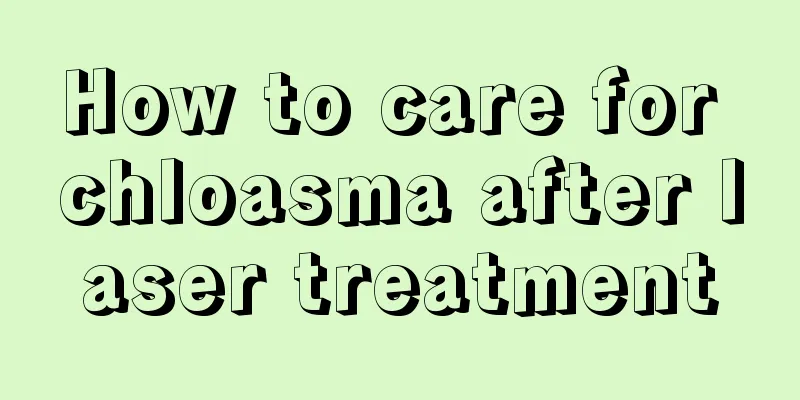What to do if diastolic blood pressure is too high

|
Hypertension is a disease that usually occurs in middle-aged and elderly people. It is a common disease among middle-aged and elderly people. After suffering from hypertension, most people need to take antihypertensive drugs every day to control their blood pressure, otherwise they will feel dizzy. High diastolic blood pressure is very similar to high hypertension. It is more likely to occur in young people. So what should we do if diastolic blood pressure is high? To prevent the occurrence and development of increasingly difficult-to-treat systolic hypertension in the elderly, we should start by controlling the increase of diastolic hypertension in young and middle-aged people as early as possible. In the early stages of hypertension, especially when working under stress, the sympathetic nerves of young and middle-aged people are in a state of transitional activation. At this time, their heart rate tends to speed up, peripheral blood vessels constrict, blood pressure rises, and blood pressure and heart rate fluctuate greatly, but they can return to normal when resting. Clinically, but it can return to normal when resting. Clinically, many middle-aged people have a systolic blood pressure of only 120-130 mmHg, but a diastolic blood pressure of up to 100-110 mmHg. Why is it that in the early stages of middle-aged hypertension, the diastolic blood pressure is mostly elevated, while the systolic blood pressure is not high? Because when the sympathetic nerves are excited, the heart's contractile force increases, the amount of blood pumped increases, and the peripheral blood vessels are in a state of contraction. Middle-aged people's blood vessels are more elastic, the aorta is easily dilated, and it is not difficult for the heart to pump blood. Therefore, the systolic blood pressure is not high. However, when the heart relaxes, the aorta expands excessively, has good elasticity and strong retraction, so the pressure generated at this time will be relatively high, which manifests as an increase in diastolic blood pressure. Patients often complain of symptoms such as dizziness, chest tightness, and palpitations. Many people believe: "The systolic blood pressure is not high. It doesn't matter if the diastolic blood pressure is a little higher. If you can avoid taking medicine, try to take as little medicine as possible." "I would rather buy health products or take Chinese medicine to prevent vascular sclerosis than take antihypertensive drugs easily." In fact, these misunderstandings are due to their lack of awareness of the harmfulness of high blood pressure, a killer. The correct concept is: Middle-aged people with diastolic hypertension should start taking antihypertensive drugs as early as possible under the guidance of a doctor. If they wait until they are old and develop systolic hypertension, systemic arteries have hardened, or even myocardial infarction or stroke occurs before treatment, it will be too late. The drug treatment effect of middle-aged diastolic hypertension is better than that of pure systolic hypertension in the elderly. Among the antihypertensive drugs that inhibit sympathetic nerves commonly used in clinical practice, the following ones mainly lower diastolic blood pressure: arolol, terazosin, and sustained-release verapamil. In addition to the above drugs, there are calcium channel blockers with stronger specificity for vasodilation, such as amlodipine besylate. Inhibitors such as felodipine and angiotensin receptor antagonists, such as losartan and olmesartan, can be used in combination with drugs that inhibit sympathetic nerves to better lower diastolic blood pressure. Several surveys have confirmed that middle-aged diastolic hypertension is an excessive blood pressure response caused by long-term mental stress, often accompanied by physical symptoms such as chest tightness, palpitations, and fatigue. Therefore, in addition to taking antihypertensive drugs immediately, the key to treatment is to try to relieve psychological stress. Self-music therapy, body massage and other treatments can be adopted. Patients with anxiety symptoms or coexisting anxiety and depression can also use tranquilizers or the compound preparation Delexin. Studies have also confirmed that the drop in diastolic blood pressure after long-term exercise is more significant than the drop in systolic blood pressure. It is best for middle-aged patients with diastolic hypertension to persist in long-term exercise, and the best types of exercise are aerobic exercises such as brisk walking and swimming for a long time. In short. Middle-aged patients with diastolic hypertension must receive drug treatment as early as possible, must receive drug treatment as early as possible, and must lower their blood pressure to the ideal level (less than 120/80 mmHg). At the same time, change your unhealthy lifestyle, don't smoke, drink less, and eat in moderation. |
>>: Ginger and eggs relieve cough
Recommend
Is it normal to have a cold for half a month?
The reason why most people can resonate with the ...
The efficacy and function of mango mask
Mango is a common fruit in our lives. It tastes s...
Can large gaps between teeth be filled?
In fact, the gap between teeth can be solved by r...
What is the reason for the small red fleshy particles on the neck
Many people have small red particles on their nec...
How to effectively prevent lung cancer in daily life? Pay attention to these to keep you away from the risk of lung cancer
How can we effectively prevent the occurrence of ...
What is the best way to treat cerebral infarction
Cerebral infarction is a common brain disease. Th...
Why is the tap water white
Water is an essential condition for our survival....
Expectorant and anti-inflammatory drugs
Due to the current serious air pollution, most pe...
What causes sudden headache and nausea?
Headache is a symptom caused by stimulation of th...
How much does a prostate cancer bone scan cost?
How much does a prostate cancer bone scan cost? T...
How to repair stitch scars?
Normally, when performing surgery, stitches are r...
What are the ways to prevent skin cancer
The incidence of skin cancer in my country is ver...
What are the effects and functions of turtle oil?
Soft-shelled turtle is a tonic with high nutritio...
What's wrong with dry nose and throat
When the seasons change or there are regional iss...
What are some tips for cleaning platinum
Many people will find that some of the platinum j...









